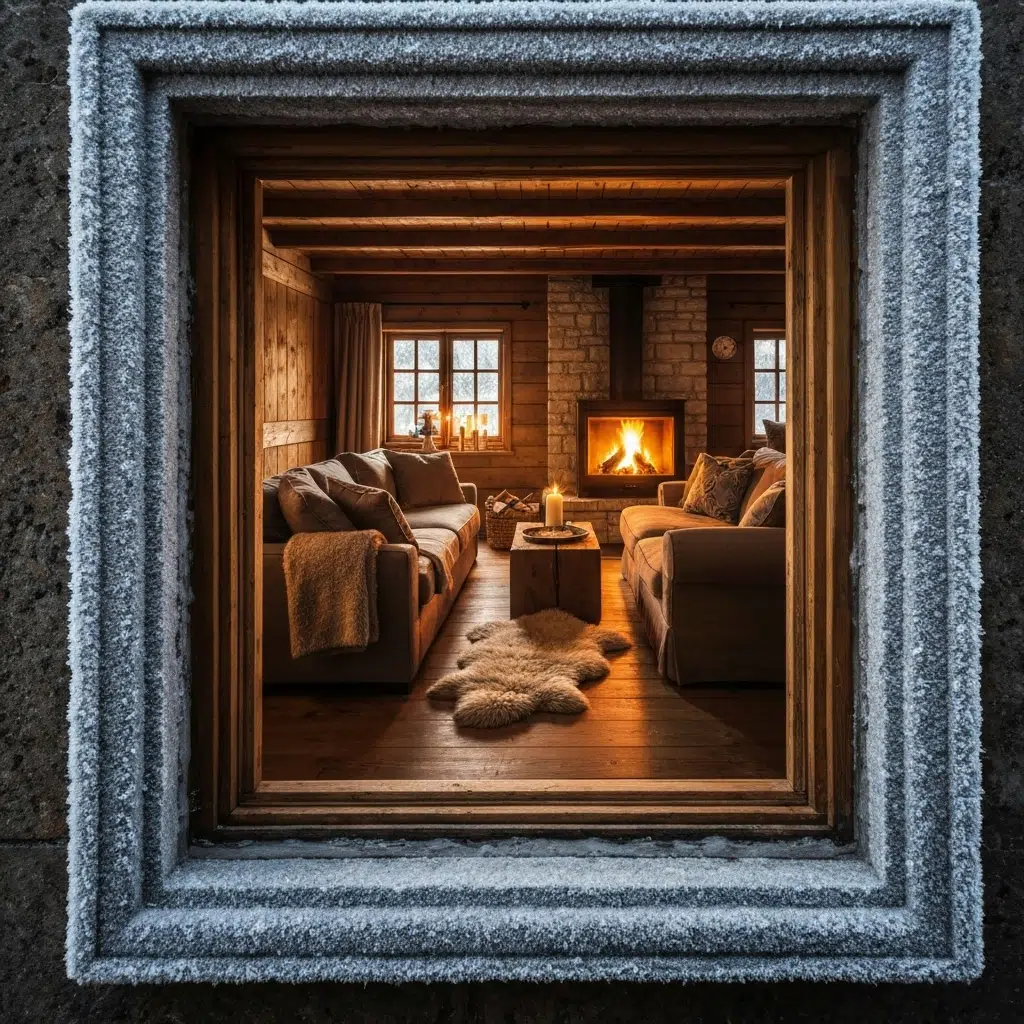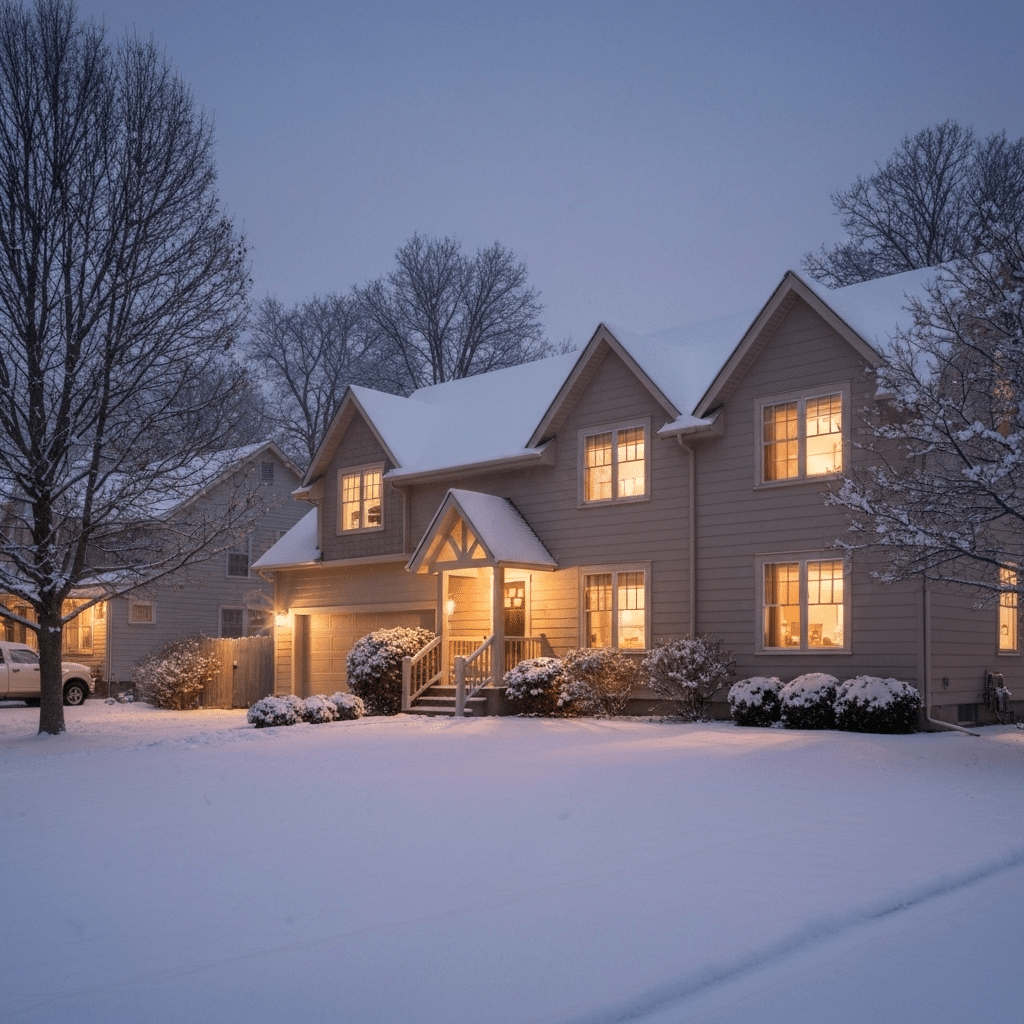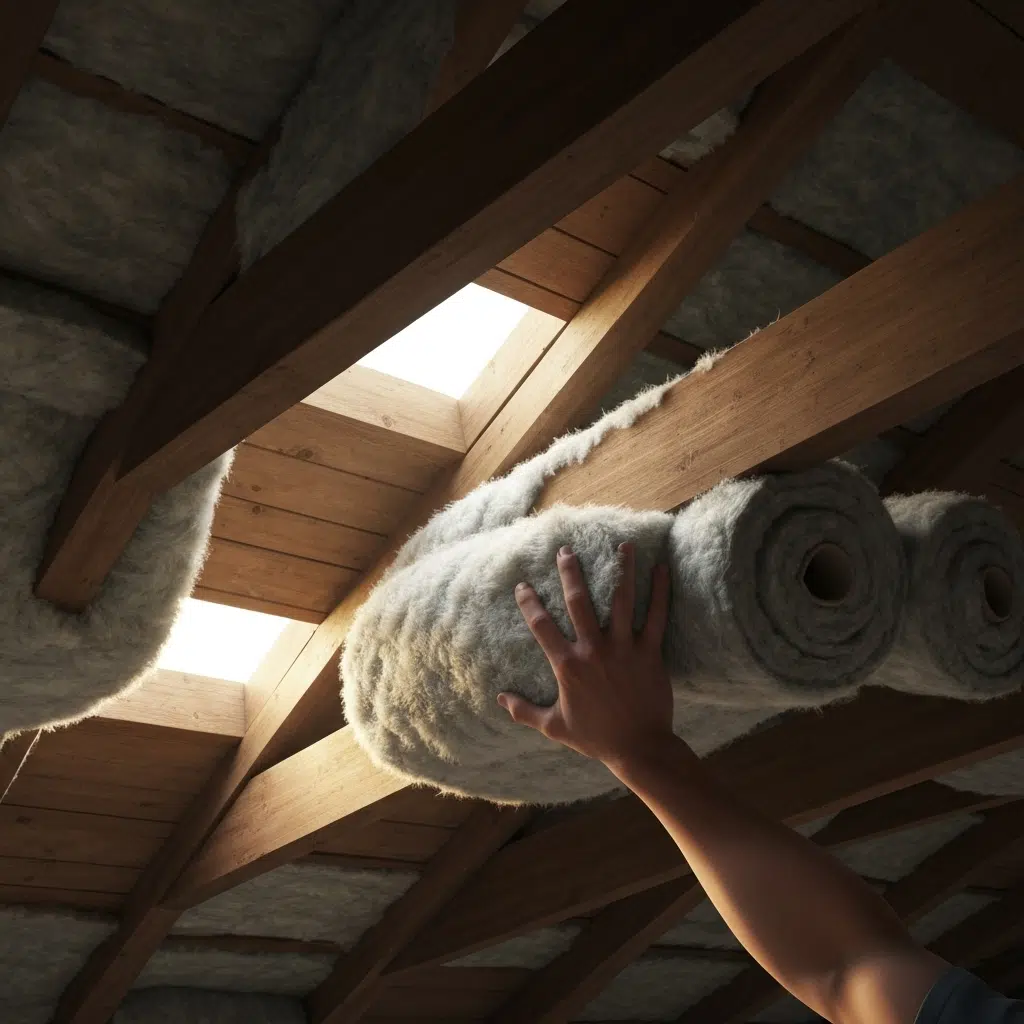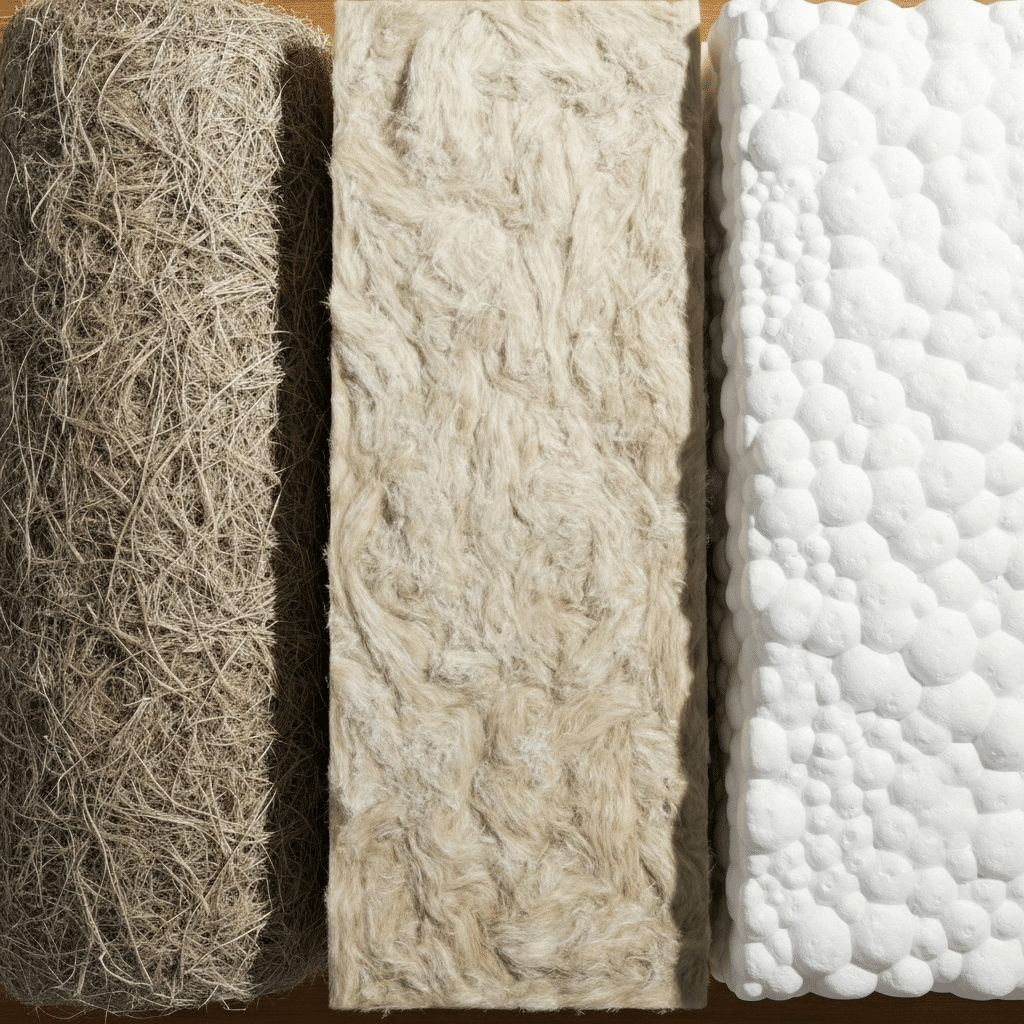
Key Highlights
- The right home insulation be important to help make your house more energy efficient. It also help get you ready for winter.
- You should check your attic, crawl spaces, and the exterior walls. These places often lose a lot of heat.
- It is important to seal any air leaks that you find around windows, doors, or in openings in your house first.
- For insulation, fiberglass, cellulose, and spray foam each have their own benefits.
- If you upgrade your insulation, you could see big energy savings over time. You also may have lower utility bills.
- You can do some home insulation jobs on your own. Make sure you pick the right materials and use safety steps.
Introduction
As winter gets close and the days feel colder, you want to be sure that your home is ready. A well-prepared home keeps you comfortable and helps you save money. A key way to keep warm is by using good home insulation. Home insulation works like a barrier that holds in warm air. It also keeps cold air out.
You will read here about what you need to know to cut down heat loss. Learn how to make your home better for energy efficiency. There are some easy steps to help your place feel cozy when winter comes.
Why Home Insulation Matters Before Winter

Taking some time to add insulation to your home before winter is a smart way to feel better and save money. When it gets cold, a house without good insulation lets heat escape. This will make your heater work much more. You will feel cold drafts and some rooms will feel colder than others. Also, your energy bills will get higher for no good reason.
When you seal and add insulation to your home, you help keep the cold out. This step helps keep your indoor temperature steady. It makes your home’s energy efficiency better. It also helps your HVAC system not work as hard. You will feel the benefits of this all season.
Benefits of Insulating Your Home
Adding new insulation to your home does more than keep you warm. It also offers several advantages. The biggest benefit is that you can get major energy savings. The insulation keeps the heat inside. So your heater does not need to work as often. This can help lower your energy expenses every month.
Proper insulation and air sealing help make your home healthier. When you lower air leakage, you keep outdoor pollutants and allergens out. That helps improve indoor air quality. A home that is well insulated will also be quieter. Materials such as mineral wool and cellulose work well to block noise.
The key benefits include:
- You will pay less for heating and cooling costs all through the year.
- The air inside will feel better and stay steady.
- There will be less noise that comes in from outside.
- Your impact on the earth will be smaller since you will use less energy.
Impact on Energy Savings and Utility Bills
The direct effect that good home insulation has on your money is easy to see. A big part of what you pay for energy bills comes from heating and cooling your home. If the insulation is not good, the money you use for heating will go right out of the walls, attic, and floors.
By adding new insulation or making your current insulation better, you can stop a lot of wasted heat or cool air in your home. When you fix air leaks and improve your insulation, studies say you can lower your energy expenses by up to 15%. This means you get to keep more of your money each month.
These energy savings last all year. When it’s summer, the same insulation keeps hot air out. This means you don’t have to use the air conditioner as much. Your cooling costs go down, too. Insulation helps with energy efficiency no matter the season. It’s a good way to manage your utility bills.
Key Areas to Focus on When Insulating a Home

When you start thinking about where to put insulation, it is helpful to look at the areas of your home that lose the most heat. Heat will go up, so your attic is often where much of the energy goes out. If the attic floors and roof are not finished, these parts need your attention first.
Other important places in your home are the exterior walls, basements, and crawl spaces. These spots face outside weather the most. When you work on insulation, you should also do proper air sealing. Even the best insulation can let heat or cold in if there are gaps and cracks. If you focus on these key spots first, you will get the most from your money. Now, let’s look at these areas in more detail.
Attic and Roof Insulation Essentials
Your attic is a key spot to insulate. It will help with heat loss in your home. Start by looking at the attic floor. If you see the floor joists, that means there may not be enough insulation. To fix this, you can use blown-in cellulose or fiberglass. They do a good job at filling in the space.
For the underside of the roof, spray foam is a good choice. Foam insulation can make the area feel tight and keep air from slipping out. A radiant barrier is another material to look into. It is often put in attics. This shiny layer can help stop heat gain in the summer, so it lets us save on cooling costs in hot climates.
Key attic insulation strategies include:
- Put loose-fill insulation on the attic floor.
- Use batts between the rafters.
- Put spray foam insulation on the bottom side of the roof deck.
- Install a radiant barrier. It helps push heat away.
Wall and Basement Insulation Strategies
Your walls and basement help to keep cold out. In new construction, people usually put insulation in the wall cavities. If the house is old, you can add loose-fill insulation to the walls without doing big repairs. This type of insulation fits into the space well.
Basement insulation can be key for energy efficiency. People often put foam board insulation inside foundation walls because it works well. This type of foam board not only helps with heat but also keeps moisture under control. If you insulate the basement ceiling, you can stop cold air from getting into your main rooms.
No matter if it’s unfinished foundation walls or closed wall cavities, picking the right material matters a lot. You can use foam board, spray foam, or blown-in cellulose in your home. All these can help hold in heat better and keep you comfortable.
Assessing Your Current Home Insulation
Before you get new insulation, it’s good to know what is in your home and where it may need help. A quick look can tell you a lot. Check if the insulation is pressed down, wet, or not the same all over. These things show it may not work well now. You should also look for clear air leaks near pipes, vents, and fixtures.
An energy assessment, which you can get from a professional or do yourself, will help you find places in your home that let the most heat transfer. This will show you where to put your time and effort. It also helps you know the best way to add insulation to where you live now, so you get the most out of it. Knowing what the situation is at your place is the first thing to do if you want your home to use energy better.
Signs Your Home Needs Better Insulation
Your home may show signs when its insulation does not work well. One clear sign is high energy bills. If the cost for heating and cooling goes up every year and how you use energy does not change, it can be because of bad insulation.
Another sign of trouble is when rooms have different temperatures. You may find that one room is cold while the next one is warm. Some spots feel drafty, especially beside exterior walls. This is a clue that cold air gets inside, and heat goes out, because there is not enough insulation. If you feel drafts, or feel cold on the floor or the wall, these are signs that there could be a problem. Keep an eye on these areas in your home.
Watch out for these common signs:
- You always get high energy bills.
- You feel cold air or see drafts in some rooms.
- There are ice dams on your roof every winter.
- In the summer, there be a lot of heat gain, so your home gets too hot and is tough to cool down.
How to Evaluate Existing Insulation Materials
When you want to add insulation to your home, start by looking at what you already have. The type of insulation in the house, like batt insulation or loose-fill, matters when you choose what to do next. Check how thick the insulation is in your attic. If it is below the floor joists, you will likely need to add more.
Look for insulation that is dirty, damp, or packed down. These problems can lower how well it works. If you find wet insulation, you must find out where the moisture comes from. It could be a roof leak or a plumbing problem. Be sure to fix it before you add new material.
You do not always have to take out old insulation. Many times, new material can go on top of it, unless the old insulation is wet or broken. For instance, you can use loose-fill foam insulation and blow it over the batts that are already there. Be sure you read the manufacturer’s rules every time. It is also a good idea to pick products that have the Energy Star mark, so you know they work well.
Common Types of Insulation for Homes in the U.S.

There are many types of insulation you can get in the United States. Some of the most common types of insulation are blanket batts and rolls, loose-fill, foam board, foam board insulation, and spray foam. The best type for your home will depend on what you need, where you want to put it, and how much you want to spend.
Each kind of material gives a different level of stopping heat from getting in or out. Some work well for open attic floors, while others are best for enclosed wall cavities. If you learn about these options, you can make a good choice and help your home use less energy. In the next part, we will talk about some of the top choices in more detail.
Fiberglass, Cellulose, and Spray Foam Explained
Fiberglass is one of the most used types of insulation. You can get it as batts, rolls, or loose-fill. It does not cost much and is simple to put in, so many people like to do it themselves. Cellulose insulation is a green choice, as it is made from recycled paper. It is usually blown in, so it works well to fill wall cavities and odd-shaped spaces.
Spray foam insulation gives the best results. When you use spray foam, it fills the area and makes a strong air barrier. This helps to block all the gaps and cracks. It comes in two types. One is open-cell, which is soft like a sponge. The other is closed-cell, which is thicker and stronger. Closed-cell foam insulation gives a higher R-value. It also has better moisture resistance. Spray foam is more expensive than some other options. You also need a professional to put it in. But the way it seals the space makes it very useful and effective.
| Insulation Type | Material | Best For |
|---|---|---|
| Fiberglass Insulation | Glass and plastic fibers | Standard wall studs, joists, and rafters |
| Cellulose Insulation | Recycled paper | Existing finished areas, irregular spaces |
| Spray Foam Insulation | Polyurethane | New wall cavities, attics, sealing leaks |
Pros and Cons of Popular Insulation Products
Every insulation product comes with its own good and bad sides. Fiberglass batts cost less and you can find them in many places. But, when you work with them, they may bother your skin and lungs. These do not make a tight air seal. If you plan a big DIY job and need to take out old fiberglass, it is a good idea to look at dumpster rentals. This helps you handle waste in a safe way.
Cellulose is made from natural fibers. It is a good pick for people who care about the environment. It also gives good soundproofing for your home. But, if it is not put in the right way, it can take in moisture. Over time, this may cause it to sink, and it will not work as well as before.
Cell spray foam, on the other hand, makes a strong air barrier. It has a high R-value, so it keeps the inside of your home well-insulated. But, it costs more at first and you will need a pro to put it in for you.
When choosing, consider these factors:
- Fiberglass: This is cheap and you can find it almost anywhere. But it does not have a high R-value.
- Cellulose: This type is good for the environment and works well in small spaces. But it may settle down as time goes by.
- Foam Board: Foam board gives a high R-value and lasts a long time. But you need to cut and fit it just right.
- Spray Foam: Spray foam gives great air sealing and works very well. But it can cost more than other types.
DIY Insulation Methods and Quick Fixes
Not every job to add insulation needs a pro. You can do some easy fixes yourself to make your home better for energy efficiency. A few things you can do are air sealing with caulk or using foam sealant. This can help cut back on drafts and lower heat loss. Even simple steps like these can make a big improvement in your home.
Putting weatherstripping on your doors and windows is an easy job that can make a big difference. If you want to do a bigger project, like changing out old attic insulation, you may have to rent a dumpster to clear out the mess. At Bargain Dumpster, we have the right options for projects big and small. These simple steps help make your house feel more comfortable.
Weatherstripping Doors and Windows
Gaps by your doors and windows let cold air come into your home. A good way to stop this is by using weatherstripping. It does not cost much and helps make a better air barrier. You can get several kinds of weatherstripping like foam tape, V-strips, and door sweeps.
Before you put the new weatherstripping on, be sure the surfaces of your door frames and window sashes are clean and dry. For doors, look closely at the bottom because a door sweep here can keep cold air from coming in. For windows, check each side of the sash. This will help make sure you get a good seal when you close it.
This easy DIY job can be done in one afternoon. You will start to see its benefits right away.
- Pick the weatherstripping that fits what you need.
- Clean every area you will use it on before starting.
- Make sure it closes well and there are no open spaces.
- Put door sweeps in place to stop air from coming in under the doors.
Sealing Gaps and Cracks Throughout the House
Air leaks can be found in many places inside your home. The leaks can stop your insulation from working as it should. You can take a walk all over your house. Look for openings near plumbing pipes. Check around electrical outlets. Watch for gaps by recessed lighting. See where the foundation touches the wall, too. These small holes can let a lot of warm air get out. They also let cold air come in.
Use caulk for small cracks. Use foam sealant for big gaps. You can get small cans of foam sealant. These cans work well for places around door frames, window frames, or spots where plumbing goes in. Sealing air leaks with this stuff is a key step to do before you add new insulation.
By making a continuous air barrier, you help your insulation work better. This step helps with energy efficiency and makes the house feel nice because it stops drafts. It is a small-cost job that brings good results for any homeowner.
Expert Tips for Insulating Older Homes
Older homes can be tough to insulate. This is even more true for historic places where people want to keep the old structure safe. The normal ways that people use to insulate might not work here. They can be too harsh. But the good news is that there are options out there now. These non-invasive ways can make the place warmer and help you save on energy efficiency. They also will not hurt the old home in any way.
The key to this is picking the right insulation material and making sure you get the best way to apply it for the home’s build. If you focus on air sealing and use materials that are not too hard to work with, you can make your home feel better and save a lot of energy. So, let’s look at some ways that work well in older homes.
Non-Invasive Options for Historic Properties
For old houses, the goal is to make the home better at saving energy but not change the feel or look of the place. One good way to do this is to put loose-fill insulation into wall cavities. You can do this by making small holes that are easy to fix later. The old plaster or woodwork stays the same.
Another good way to save energy is to look at the attic and basement. It can be easy to put insulation on the attic floor if it is not finished. You do not need to mess up the rest of the house. In the basement, using foam board insulation on the walls can help a lot. It is also important to make a strong air barrier by sealing cracks and gaps. This job does not take much work on the house.
Consider these non-invasive approaches:
- Blowing cellulose or fiberglass into empty wall cavities.
- Adding insulation and putting in an air barrier in the attic.
- Using storm windows to make an extra layer over the regular windows.
- Putting indoor or outdoor foam board insulation where you can.
Improving Efficiency Without Major Renovations
You do not have to break down walls if you want your old home to waste less energy. Air sealing is the best way to do this. Go through the house step by step and fill every small gap or crack you see with caulk or weatherstripping. Be sure to check the attic and the basement, as these places let the most energy get out.
You can improve attic insulation without doing a big renovation. One way is to put batts or blown-in insulation on top of what is already there. This is a simple project and does not take much time. You may also look into using reflective insulation or a radiant barrier in the attic. These help push heat away, which is good for homes in warm places.
Keywords: attic insulation, reflective insulation, radiant barrier
Simple steps, such as putting up heavy curtains on your windows during winter, and making sure your heating system works well, can help improve the energy efficiency in your home. Taking these actions can make a big difference. Over time, they add up to big savings on your bills and more comfort in your old home.
Shopping Guide for Home Insulation Products
When you want to get insulation, it can feel like the choices never end. There is spray foam, foam board, and other types. Each one does something special. Before you buy, think about things like R-value, how much money you want to spend, and where the insulation is going to be used.
Looking for the Energy Star label is a good way to start when you shop. The Energy Star label shows that a product meets strong energy standards. This guide will help you know what to look for. You can pick insulation material that gives your home the best results.
What to Look For When Buying Insulation
When you shop for home insulation, you need to look at the R-value. That is what shows how well the material can stop heat flow. A higher R-value means the insulation gives better results. The Department of Energy tells us what R-values work best in different climate zones.
Always check for the Energy Star logo when you get insulation material. This shows that the material meets the federal rules for energy efficiency and good quality. You should think about what type of insulation works best for you, like batts, rolls, loose-fill, or foam insulation. Pick the one that fits the space you want to insulate.
At the end, read the instructions from the company. This helps you stay safe. You can also learn how to install things the right way.
- Check the recommended R-value that is right for the place you live in.
- Look for the Energy Star certification label on the insulation.
- Pick the right form of insulation for the project you do.
- Go over safety and installation rules before you start this work.
Costs, R-Values, and Local Building Codes
The cost for insulation changes a lot based on the material, its R-value, and if you pay a contractor to put it in for you. Some options like spray foam may cost more at first. But, spray foam can give better energy savings over time. It is good to get quotes from a few contractors. This way, you can see which price is best.
R-values come from an official government organization called the Federal Trade Commission. You can find these numbers on product labels. The labels help you look at products and know which one is right for you.
Before you start any insulation work in your house, check your local building codes first. These codes say what R-value you need for areas like ceilings, walls, and floors. This is good so you use the right product for your home.
This table uses data from the Department of Energy. It shows R-values for several materials. The information is meant to give you a basic understanding of how different materials work.
|
Insulation Material |
R-Value per Inch |
|---|---|
| Fiberglass (batt) | 3.1 – 4.3 |
| Cellulose (loose-fill) | 3.2 – 3.8 |
| Closed-Cell Spray Foam | 6.0 – 7.0 |
| Rigid Foam Board | 3.6 – 6.5 |
Conclusion
Getting your home ready for winter by adding insulation is a good way to keep it warm and use less energy. It helps to focus on the attic, walls, and basement. This cuts down on heat loss and makes your bills lower. You should look at the insulation you have now. It’s a good idea to use the right materials, like spray foam, fiberglass, or cellulose. The right one can make a big change.
Doing simple things helps, too. Try weatherstripping doors and windows, and sealing any small gaps. These steps can all help your home keep heat inside. It’s better to do this before winter starts. Take care of these things now, so you don’t have problems when it gets cold.
If you want help that fits you and expert advice on insulation, you can ask for a consultation. This way, you get answers on spray foam and more ways to improve energy efficiency and stop heat loss in your home.
Frequently Asked Questions
Can I add insulation to my existing home without professional help?
Yes, you can do home insulation on your own. A lot of home insulation work is fine for DIY. You can put batt or roll insulation in the attic if it is easy to get to. If you use weatherstripping or a foam sealant, that will help close gaps as well. These jobs work well for most people.
But using spray foam insulation or blown-in cellulose looks different. These need special tools, and someone who knows how to use them. You should hire a pro for spray foam to get the best results.
Which areas offer the biggest energy-saving returns?
To save the most energy, start with the attic floor. A lot of heat goes out through the roof, so it should be the first thing you fix. After that, look at crawl spaces and basements because they also let out warmth. Don’t forget the exterior walls. All of these areas need work to help your home keep heat in better and help you get more energy savings.
How can I insulate my home for winter while avoiding common mistakes?
To avoid common problems, you have to focus on air sealing before you put in insulation. Do not cover attic vents, because good airflow is important. You should not push down or crush batt insulation, as that makes it less useful. If you use foam board insulation, all seams need to be taped. This simple step helps stop air leaks and makes the home more energy efficient.

